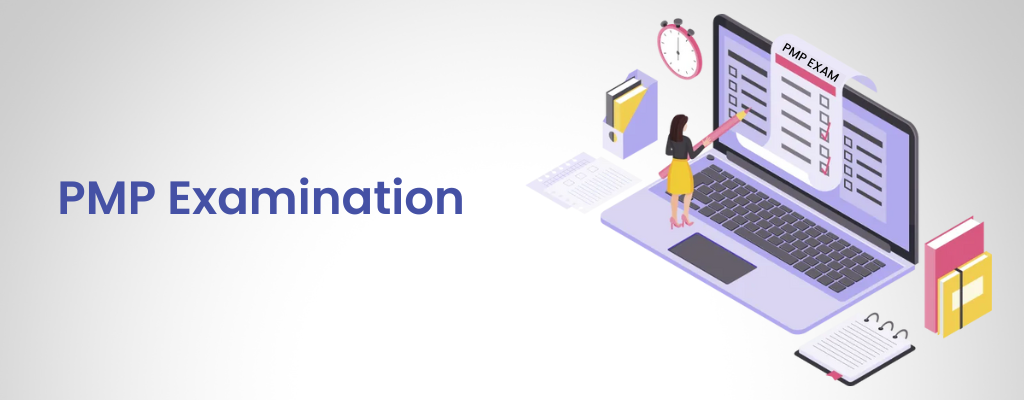
The Project Management Professional (PMP) certification is a prestigious and globally recognised credential for Project Managers. With such a global presence comes the need for higher standards, which is why there are routine PMP Exam Changes.
PMP Exam is administered by the Project Management Institute (PMI), and it evaluates a candidate's knowledge and skills in Project Management based on the PMBOK Guide . According to a LinkedIn report, PMP is considered one of the toughest professional examinations.
In this blog, you will understand the new updates and changes in the PMP exam and the preparation methods. Read more!
Table of Contents
1) PMP Exam content changes
2) PMP Exam format changes
3) Consequences of the PMP Exam Changes
4) Study tips for the 2024 PMP Exam
5) Conclusion
PMP Exam content changes
First, let's discuss why there are PMP Exam Changes in the first place before we examine the modifications that have been made. Simply said, it's because Project Management is a constantly changing field.
Due to its constant evolution, the content breakdown of PMP Exam has also constantly changed. According to the 2015 PMP curriculum, the main focus was on the project process. The domains of the PMP Exam in 2015 were as follows:
1) Initiating the project (weighted at 13 per cent)
2) Planning the project (weighted at 24 per cent)
3) Executing the project (weighted at 31 per cent)
4) Monitoring & controlling the project (weighted at 25 per cent)
5) Closing the project (weighted at 7 per cent)
The PMP job description of a Project Manager is ever-progressing. From focusing purely on the process of PMP, the role has now evolved into a multi-dimensional one, where the Project Manager focuses on managing the process, the human resources and the environment around them.
The new PMP exam clearly reflects the demands of the current corporate environment. It will concentrate on three main domains, as stated below:
People
The "People" section of the PMP Exam is designed to evaluate an aspirant's leadership ability. Weighing in at 42 per cent of the exam, this domain's main topics are building a team, managing conflict and ensuring that the team is adequately qualified and trained to handle a project.
Process
The "Process" section of the PMP Exam is designed to evaluate the technical aspects of Project Management in a PMP aspirant. Constituting 50 per cent of the PMP exam, this domain's main topics are planning and managing budgets and resources, integrating project planning activities, managing project changes, etc.
Business Environment
The "Business Environment" section of the PMP Exam is significantly smaller than the two other domains, weighing only 8 per cent of the total examination. This domain's main topics are planning and managing project compliance, evaluating the project's benefits and value, and supporting organisational changes in project guidelines.

PMP Exam format changes
The exam format has changed in content, quantity and time allocated. The exam's 200 multiple-choice questions from the 2015 edition covered each of the five project management domains. The older format of the PMP Exam questions consisted primarily of formula-based, situational, and knowledge-based questions.
The three new domains are covered by 180 questions on the new PMP Exam, including multiple-choice, multiple-response, matching, hotspot, and fill-in-the-blank questions. The most recent PMP Exam included plenty of scenario-based questions with animations to assess candidates' adaptability and soft skills more effectively.
Summing up in tabular format, the PMP Exam Changes are as follows:
Content Changes:
Domain | Weightage of Domain |
|---|---|
People | 42% |
Process | 50% |
Business Environment | 8% |
Total | 100% |
Format Changes:
Questions | 180, but 175 questions will be graded |
Time | 230 minutes |
Breaks | Paper-based tests: None Computer-based tests: 20 minutes split into two breaks |
Types of Questions |
MCQs
|
Consequences of the PMP Exam Changes
As a Project Management Professional (PMP), you must adapt and react quickly to dynamic and evolving situations. You must alter your pattern and preparation methods to fit the PMP Exam Changes.
The primary reason for the PMP Exam Changes is the evolution of the Project Manager role in the corporate world. From a purely process-based curriculum to a multi-faceted curriculum that would cover all aspects of PMP, these PMP Exam Changes will, in the long run, be extremely beneficial to ease into the corporate culture of any organisation in the future.
There has also been a decrease in the possible time taken by a PMP aspirant during the exam. The old format consisted of 175 MCQs to be scored in 240 minutes. The new format of the PMP Exam has made the examination more expansive, with a lot more variety in questions and 175 questions to be scored in 230 minutes.
It is pivotal that you stop fretting over the changes and start preparing because the PMP Exam has traditionally been among the hardest exams in the world.
Study tips for the 2024 PMP Exam
Preparing for the PMP Examination requires dedication and discipline. Here are some study tips that can help you in your preparation:
Use quality study materials: Use high-quality study materials that are updated to reflect the latest PMP Exam Changes. Some popular PMP study materials include the PMBOK Guide, PMP Exam prep books and online courses.
Create a study plan: Develop a plan that works for you. This plan can include how much time you will dedicate to studying, what study materials to use and when you plan to take the PMP Exam.
Understand the exam format: Familiarise yourself with the updated PMP Exam format and structure. This is essential in more ways than one, as it can help with time management, resource management and mastery over the three new domains for the all-important PMP Exam itself.
Practise with sample questions: Practice answering sample questions. This will help you familiarise yourself with the exam format and the types of questions you can expect to see on the exam.
Focus on your weak areas: Identify your weak areas and focus on them while preparing for the PMP Exam. This will help you address any knowledge gaps that you may have and improve your overall performance on the exam.
Join a study group: Consider joining a study group or a discussion forum for the sake of PMP Exam preparation. This can help you stay motivated and accountable while constantly crafting new ideas to make your preparation easier.
Take practice exams: Take practice exams to simulate the actual exam experience. This will help you build your stamina and help you manage time and resources during the actual PMP Exam.
Take breaks: Take routine, planned breaks while preparing for the PMP Exam, so you don't overload yourself. Consider taking walks and stretching and breathing exercises to help your brain retain information.
Conclusion
PMP, as a concept, advocates that when it comes to change, the most important actions to take are proactivity and preparation. As long as you prepare effectively and follow the necessary steps needed to master the three new domains, there is no reason to be nervous regarding the new PMP Exam Changes.
We hope that the breakdown of the new PMP Exam format and content helped alleviate any uncertainties about the extensive changes executed by the PMI. The study tips are general advice on avoiding last-minute scrambles and allowing you to focus on the key parts of the PMP Exam.
Kickstart your PMP preparation from here – sign up for the Introduction to Project Management course now!



